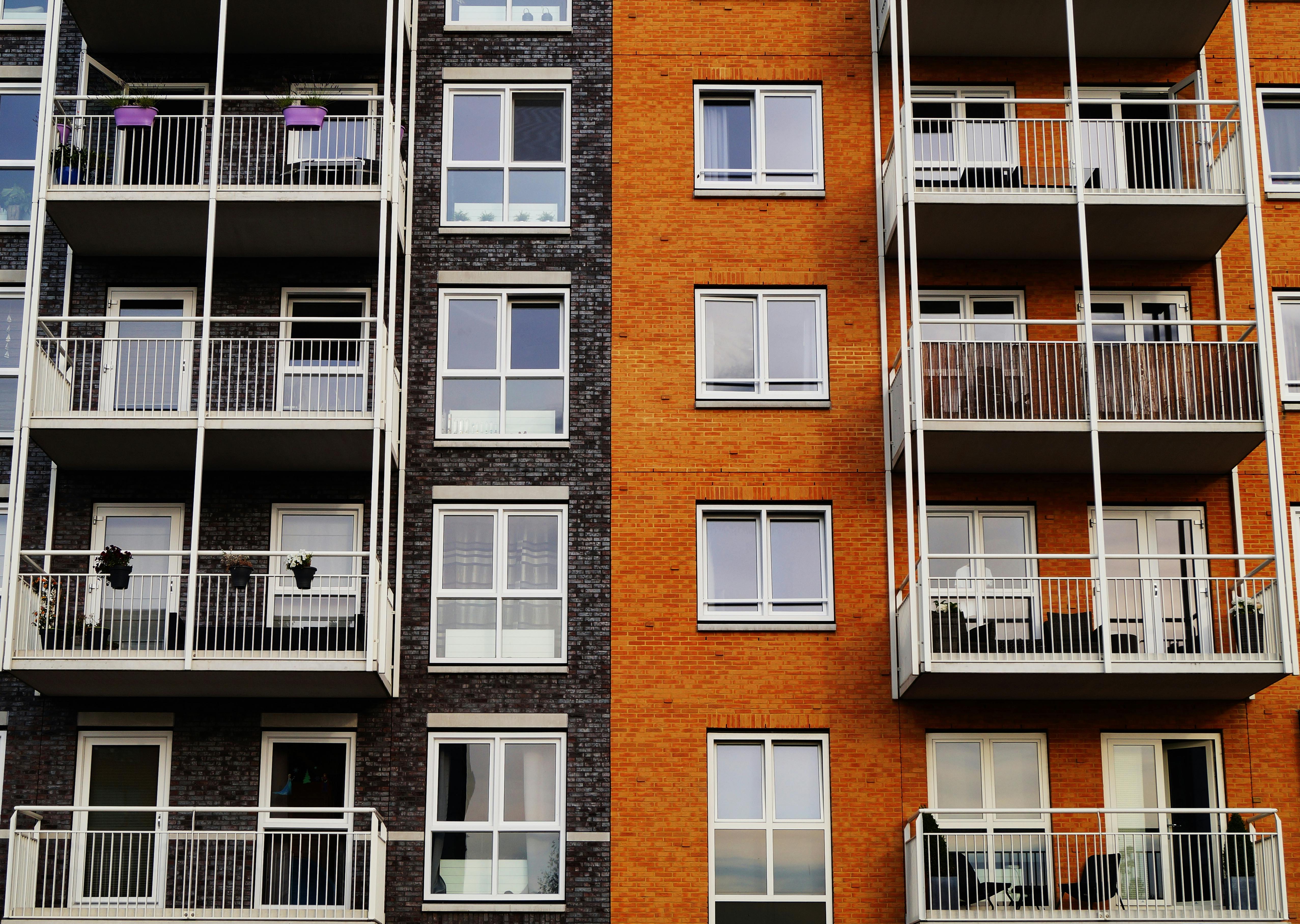Why measuring social impact matters to funders and housing providers
Measuring social impact in housing helps funders and providers target services to residents’ real needs, improve wellbeing, reduce costs, and guide smarter decisions across the housing lifecycle with stronger outcomes for people and communities.


Measuring social impact is important for funders and providers at every stage of a housing project. Conducted pre-build, social impact forecasts can inform design and planning decisions
Measuring social impact is important for funders and providers at every stage of a housing project. Conducted pre-build, social impact forecasts can inform design and planning decisions
At ImpactLab, we have measured social impact for 370 non-housing programmes. Yet many of the community organisations we work with report that it is harder for a person to be helped if they are not appropriately housed. In social economic terms, housing is a ‘global factor’. For social impact, housing can be a multiplier or undo good work. We’ve seen this across many GoodMeasures including those specifically focused on housing from emergency housing for homeless youth, to mixed tenure general market and social housing projects.
Social impact measurement helps match services to need
Measuring social impact helps service providers and funders to target and match to residents’ needs, by enabling deep, granular and high-resolution knowledge of who is living in a house. This matters because different residents have very different needs. For example, a young single man with mental health challenges who is an ex-prisoner has very different needs to a family, or an elderly woman, or someone who was recently homeless.
Understanding individual needs allows for the delivery of precise services that help manage or support each resident’s actual challenges and aspirations—this has a profound impact. A large provider may currently offer the same services to all residents, often at considerable cost. However, those services may only be effective for a fraction of the population. By aligning services with actual needs, support can not only become significantly more effective and generate greater social impact, but also be delivered at a lower cost.
Healthier, happier residents are less transient. This leads to reduced turnover and maintenance costs, while simultaneously improving residents' quality of life. As residents gain independence, the level of services required can be scaled back.
In short, understanding what residents need is an essential part of measuring social impact for housing. It enables the provision of targeted services that can profoundly improve both residents’ lives and the financial sustainability of housing projects.
Social impact measurement can be used for strategic decision making across the project lifecycle
Measuring social impact is important for funders and providers at every stage of a housing project. Conducted pre-build, social impact forecasts can inform design and planning decisions, as you can ‘test’ different ideas and models against forecasted social return on investment (SROI) including different population groups and service mixes.
Once a house has been built, social impact measurement allows estimates and expectations to be checked against actuals. If social impact is higher or lower than expected, specific and validated measurement enables adjustments from housing and service mix to financial model. Recommendations can even be given to funders to change funding emphasis.
Through GoodMeasure Homes, we have seen customers make significant changes as a result of social impact analysis both pre and post build. These changes have included foundational aspects such as ownership models and the number of dwellings planned.
Social impact measurement provides insight into the holistic impact of housing
Another key advantage is the ability to assess not just housing, but also the additional support services that are often required for success. These may include tenancy management, case management, and referral systems. For residents with complex needs, these services are often the difference between success and failure in improving outcomes.
We have found that our prior experience in measuring a diverse range of social services has been crucial in understanding the role additional support services play in making change. By integrating them into the measurement framework, we can provide funders and providers with a complete picture of project effectiveness. This makes the case for investing in housing projects even stronger, as it demonstrates how different components work together to create impact over the long term.
Conclusion
For funders and providers of housing who are focused on enabling residents to lead better lives, the ability to clearly assess what impact they are making, and how they are making that impact is essential. Housing is more than just infrastructure; it is a platform for wellbeing, stability, and opportunity. When outcomes are measured thoughtfully, providers can see not only whether they are making a difference, but also how to deepen that impact.
Understanding the effectiveness of housing and support services allows organisations to make smarter decisions, target resources more effectively, and continually improve both social and financial outcomes.
At ImpactLab, we have developed GoodMeasure Homes, a product specifically designed to measure the impact of social impact focused housing. Get in touch with our team to find out more.
At ImpactLab, we have measured social impact for 370 non-housing programmes. Yet many of the community organisations we work with report that it is harder for a person to be helped if they are not appropriately housed. In social economic terms, housing is a ‘global factor’. For social impact, housing can be a multiplier or undo good work. We’ve seen this across many GoodMeasures including those specifically focused on housing from emergency housing for homeless youth, to mixed tenure general market and social housing projects.
Social impact measurement helps match services to need
Measuring social impact helps service providers and funders to target and match to residents’ needs, by enabling deep, granular and high-resolution knowledge of who is living in a house. This matters because different residents have very different needs. For example, a young single man with mental health challenges who is an ex-prisoner has very different needs to a family, or an elderly woman, or someone who was recently homeless.
Understanding individual needs allows for the delivery of precise services that help manage or support each resident’s actual challenges and aspirations—this has a profound impact. A large provider may currently offer the same services to all residents, often at considerable cost. However, those services may only be effective for a fraction of the population. By aligning services with actual needs, support can not only become significantly more effective and generate greater social impact, but also be delivered at a lower cost.
Healthier, happier residents are less transient. This leads to reduced turnover and maintenance costs, while simultaneously improving residents' quality of life. As residents gain independence, the level of services required can be scaled back.
In short, understanding what residents need is an essential part of measuring social impact for housing. It enables the provision of targeted services that can profoundly improve both residents’ lives and the financial sustainability of housing projects.
Social impact measurement can be used for strategic decision making across the project lifecycle
Measuring social impact is important for funders and providers at every stage of a housing project. Conducted pre-build, social impact forecasts can inform design and planning decisions, as you can ‘test’ different ideas and models against forecasted social return on investment (SROI) including different population groups and service mixes.
Once a house has been built, social impact measurement allows estimates and expectations to be checked against actuals. If social impact is higher or lower than expected, specific and validated measurement enables adjustments from housing and service mix to financial model. Recommendations can even be given to funders to change funding emphasis.
Through GoodMeasure Homes, we have seen customers make significant changes as a result of social impact analysis both pre and post build. These changes have included foundational aspects such as ownership models and the number of dwellings planned.
Social impact measurement provides insight into the holistic impact of housing
Another key advantage is the ability to assess not just housing, but also the additional support services that are often required for success. These may include tenancy management, case management, and referral systems. For residents with complex needs, these services are often the difference between success and failure in improving outcomes.
We have found that our prior experience in measuring a diverse range of social services has been crucial in understanding the role additional support services play in making change. By integrating them into the measurement framework, we can provide funders and providers with a complete picture of project effectiveness. This makes the case for investing in housing projects even stronger, as it demonstrates how different components work together to create impact over the long term.
Conclusion
For funders and providers of housing who are focused on enabling residents to lead better lives, the ability to clearly assess what impact they are making, and how they are making that impact is essential. Housing is more than just infrastructure; it is a platform for wellbeing, stability, and opportunity. When outcomes are measured thoughtfully, providers can see not only whether they are making a difference, but also how to deepen that impact.
Understanding the effectiveness of housing and support services allows organisations to make smarter decisions, target resources more effectively, and continually improve both social and financial outcomes.
At ImpactLab, we have developed GoodMeasure Homes, a product specifically designed to measure the impact of social impact focused housing. Get in touch with our team to find out more.

The Social Investment Agency: What we know so far
With SIA’s second funding pathway EOI now closed, we unpack what the Social Investment Agency is, what it aims to do, and what these changes mean for providers in the social sector, kicking off our new series on SIA and outcomes-based funding.

Part 2- Understanding the Intervention Logic
Part 2 of this series, unpacks the Intervention Logic, outlining how it differs from a Theory of Change and the role it plays in mapping programmes, evaluating outcomes, and supporting clear communication with stakeholders.

Part 1- Understanding the Theory of Change
In the first article in this two-part series we introduce the Theory of Change, a flexible framework that maps how services create impact. It explains its purpose, benefits, and why it’s a powerful tool for guiding, testing, and communicating change.

Why measuring social impact matters to funders and housing providers
Measuring social impact in housing helps funders and providers target services to residents’ real needs, improve wellbeing, reduce costs, and guide smarter decisions across the housing lifecycle with stronger outcomes for people and communities.
Get in touch
We help impact organisations know, show and grow their social impact. Let’s work together to do good, better!



